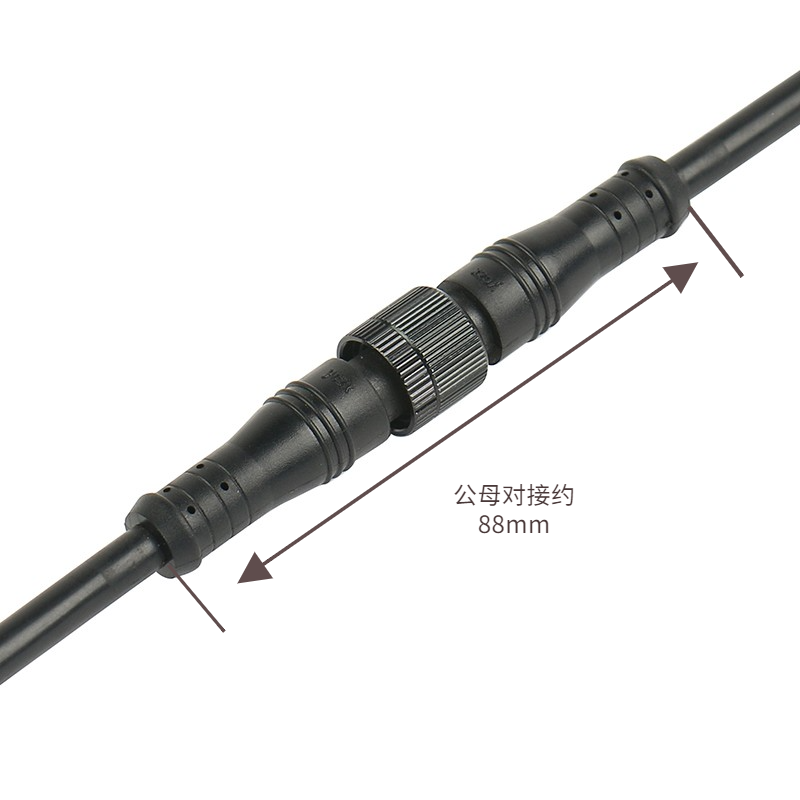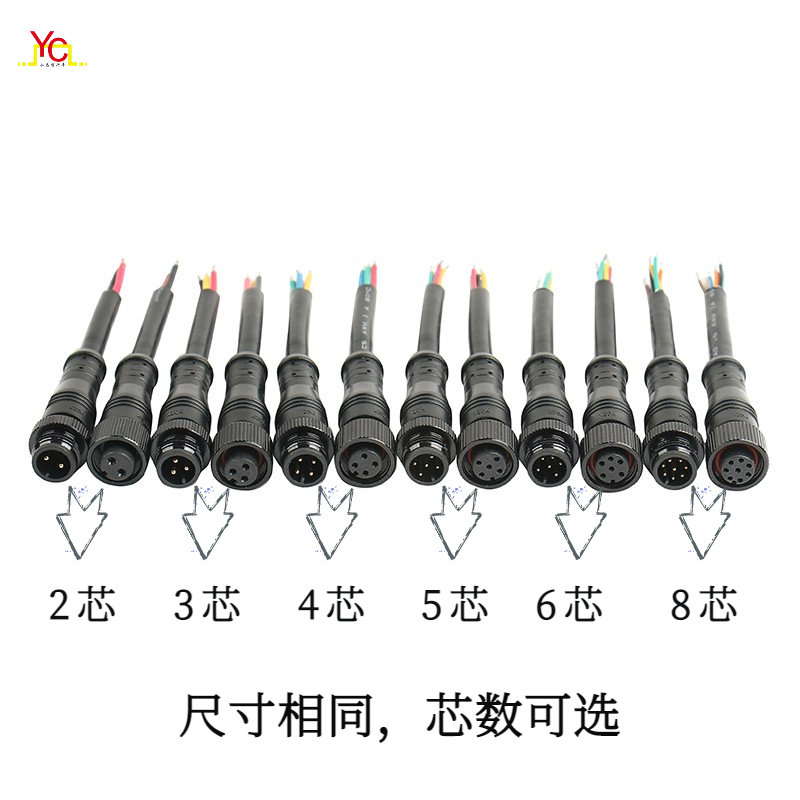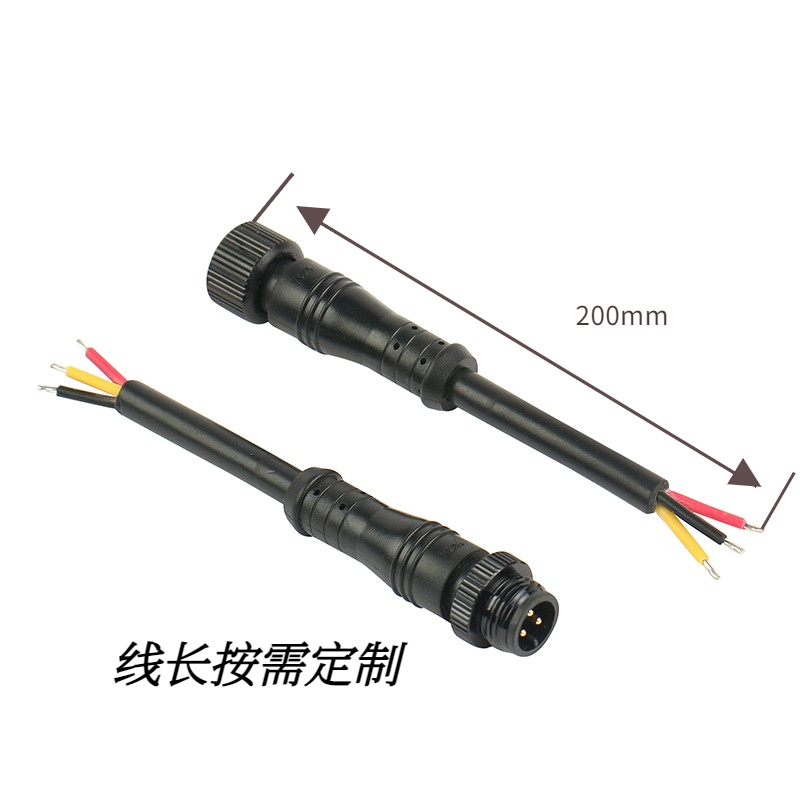News


News

Diving Deep into Waterproof Bulkhead Connectors The Backbone of Secure Electrical Connections
Release time:2024-05-30
viewed:1359
In the realm of electrical engineering and installation, ensuring secure connections amidst challenging environments is paramount. Enter the unsung hero of electrical systems: the waterproof bulkhead connector. Often overlooked yet indispensable, these connectors serve as the bedrock of reliable electrical connections, particularly in harsh and demanding conditions.
In this exploration, we delve into the intricacies of waterproof bulkhead connectors, shedding light on their internal structure, functionality, applications, and the crucial role they play in safeguarding electrical integrity. Join us as we embark on a journey into the depths of this fundamental component, understanding its significance as the backbone of secure electrical connections.
Understanding Waterproof Bulkhead Connectors:

Waterproof bulkhead connectors represent a crucial component in electrical systems, facilitating secure connections in environments where exposure to moisture, dust, and other contaminants poses significant challenges. These connectors are specially designed to create a watertight seal, ensuring the integrity of electrical connections even in the most demanding conditions.
Waterproof bulkhead connectors, as the name suggests, are connectors designed to provide a waterproof seal when passing through a barrier, such as a wall or enclosure. They typically consist of two main parts: the bulkhead connector itself and the mating connector.
The bulkhead connector is installed on the exterior side of the barrier, while the mating connector is installed on the interior side. Together, they form a secure and watertight connection that allows electrical signals to pass through while keeping moisture and other contaminants out.
The importance of waterproof bulkhead connectors in electrical systems cannot be overstated. In environments such as marine, outdoor, and industrial settings, where exposure to water, humidity, and corrosive substances is common, traditional connectors are prone to failure and pose safety hazards.
Waterproof bulkhead connectors address these challenges by providing a reliable and durable solution for maintaining electrical connections in harsh conditions.
Moreover, waterproof bulkhead connectors play a crucial role in ensuring the safety and reliability of electrical systems in critical applications. In marine environments, for example, where electrical equipment is exposed to saltwater and marine life, the use of waterproof bulkhead connectors is essential for preventing corrosion and electrical failures.
Similarly, in outdoor installations subjected to rain, snow, and temperature fluctuations, these connectors offer protection against moisture ingress, preventing short circuits and electrical malfunctions.
In industrial settings, where machinery and equipment operate in harsh conditions such as high temperatures, vibrations, and exposure to chemicals, waterproof bulkhead connectors provide a robust solution for maintaining electrical connections in challenging environments. By sealing out moisture and contaminants, these connectors help prevent downtime, equipment damage, and safety risks associated with electrical failures.
Waterproof bulkhead connectors are essential components in various industries, particularly in sectors where equipment needs to maintain functionality in challenging environments, such as marine, aerospace, and industrial applications. These connectors are designed to provide a reliable electrical connection while protecting against moisture, dust, and other environmental factors. Here's an overview of their internal structure, components, design features, materials used, and their properties:
1. Housing: The outer shell of the connector is typically made of durable materials such as metal or high-grade plastics. It provides structural integrity and protection against external elements.
2. Contacts/Pins: Conductive metal components that establish electrical connections between mating connectors. These can be made from materials like brass, copper, or gold-plated alloys for optimal conductivity and corrosion resistance.
3. Sealing Mechanism: This is a critical component that ensures the connector remains watertight. It usually involves rubber gaskets, O-rings, or sealing compounds to prevent moisture ingress.
4. Locking Mechanism: To maintain a secure connection, bulkhead connectors often feature locking mechanisms such as threads, bayonet locks, or snap-in designs.
5. Insulation: Insulating materials are used to prevent electrical conductivity between contacts and the connector housing. This prevents short circuits and ensures proper electrical isolation.
6. Shielding: In applications where electromagnetic interference (EMI) protection is necessary, bulkhead connectors may include shielding components to minimize signal interference.

7. Strain Relief: To prevent cable damage from bending or pulling, strain relief features like cable glands or flexible grommets are often incorporated into the design.
1. Housing Materials:
1. Metal Alloys: Aluminum, stainless steel, and brass are common choices for their strength, corrosion resistance, and durability.
2. Plastics: High-performance thermoplastics like PVC, polyamide (nylon), or polycarbonate are used for their lightweight properties and resistance to chemicals and UV radiation.
2. Sealing Materials:
1. Rubber: Silicone rubber or EPDM (ethylene propylene diene monomer) are commonly used for their flexibility and excellent sealing properties, even in harsh environments.
2. O-rings: Made from various elastomers such as nitrile rubber (NBR) or fluorocarbon rubber (Viton), O-rings provide effective sealing against moisture and contaminants.
3. Contact Materials:
1. Brass: Offers good electrical conductivity and corrosion resistance, making it suitable for many applications.
2. Gold Plating: Applied to contact surfaces to enhance conductivity and prevent oxidation, ensuring reliable electrical connections over time.
4. Insulation Materials:
1. Engineering Plastics: Materials like polyethylene (PE) or polypropylene (PP) are commonly used for insulation due to their electrical insulation properties and resistance to environmental factors.
5. Shielding Materials:
1. Metal Foils: Thin layers of materials such as aluminum or copper can be used for electromagnetic shielding, protecting against EMI.
6. Strain Relief Materials:
1. Thermoplastic Elastomers (TPE): Flexible materials like TPE are often used for strain relief due to their ability to withstand repeated bending and stretching without losing their properties.
By integrating these components, design features, and materials, waterproof bulkhead connectors can reliably maintain electrical connections while withstanding harsh environmental conditions, ensuring the integrity and longevity of critical systems and equipment.

Waterproof bulkhead connectors are crucial components for ensuring reliable electrical connections in environments where moisture, water, and contaminants are present. Let's dive into how these connectors work and their applications:
Waterproof bulkhead connectors employ various sealing mechanisms to prevent moisture and contaminants from entering the electrical connection points. Here are some common sealing methods:
1. Rubber Gaskets or O-Rings: These are placed between the connector halves to create a watertight seal when the connectors are screwed or snapped together. The compression of the gasket or O-ring forms a tight barrier against moisture ingress.
2. Threaded Seals: Some connectors feature threaded designs that allow for a secure fit between mating halves. The threads provide an additional barrier against water penetration when tightened properly.
3. Epoxy Potting: In some cases, connectors are filled with epoxy resin to encapsulate the electrical contacts completely. This potting material forms a solid barrier that effectively seals out moisture and contaminants.
4. Cable Glands: For cables entering or exiting the connector, cable glands are often used to provide strain relief and sealing. These glands clamp around the cable, forming a tight seal to prevent water ingress along the cable.
Waterproof bulkhead connectors are designed to withstand harsh environmental conditions, offering protection against:
1. Water Ingress: The primary function of these connectors is to prevent water from entering the electrical connections, which can cause short circuits, corrosion, and electrical failures.
2. Contaminants: In addition to water, bulkhead connectors also safeguard against dust, dirt, oils, and other contaminants that could compromise the integrity of the electrical connections.
1. Marine and Subsea Environments:
Waterproof bulkhead connectors are extensively used in marine and subsea applications due to their ability to withstand saltwater exposure and high-pressure environments. They are crucial for connecting electrical systems on ships, submarines, offshore platforms, and underwater equipment.
2. Outdoor Electrical Installations:

In outdoor installations where exposure to rain, snow, and extreme temperatures is common, waterproof bulkhead connectors provide reliable electrical connections for outdoor lighting, surveillance cameras, signage, and other outdoor equipment.
3. Industrial Machinery:
In industrial settings where machinery is exposed to moisture, dust, and vibrations, waterproof bulkhead connectors ensure dependable electrical connections for sensors, actuators, motors, and control systems. They help maintain operational efficiency and prevent downtime due to electrical failures.
Waterproof bulkhead connectors play a vital role in maintaining the integrity and reliability of electrical systems in challenging environments, making them indispensable across various industries and applications.
When selecting waterproof bulkhead connectors, several factors must be considered to ensure they meet the specific requirements of the application. Here are key considerations:
1. Waterproof Rating (IP Rating): The IP (Ingress Protection) rating indicates the degree of protection against solid objects and liquids. Choose a connector with a suitable IP rating based on the expected exposure to moisture, water, dust, and other contaminants.
2. Temperature Range: Consider the temperature range of the environment where the connectors will be installed. Ensure that the connectors can withstand both high and low temperatures without compromising performance.
3. Chemical Resistance: If the environment involves exposure to chemicals or corrosive substances, select connectors with appropriate chemical resistance properties to prevent degradation over time.
4. UV Resistance: For outdoor applications exposed to sunlight, UV-resistant connectors are essential to prevent degradation and maintain performance over time.
1. Voltage and Current Ratings: Ensure that the connectors can handle the voltage and current levels required for the electrical system without overheating or causing voltage drops.
2. Connector Type: Choose the appropriate connector type based on the specific electrical connections required, such as circular connectors, rectangular connectors, or coaxial connectors.
3. Contact Configuration: Consider the number and configuration of contacts needed for the application, such as signal, power, or data connections. Ensure compatibility with existing equipment or systems.
4. EMI/RFI Shielding: In environments with electromagnetic interference (EMI) or radio frequency interference (RFI), select connectors with proper shielding to prevent signal degradation or interference.
1. Mounting Options: Consider the available mounting options for the bulkhead connectors, such as panel mount, flange mount, or PCB mount, based on the installation requirements and space constraints.
2. Connector Size and Form Factor: Choose connectors that fit within the available space and accommodate the size of the cables or wires being connected.
3. Ease of Installation: Select connectors that are easy to install and maintain, with features such as tool-less assembly or quick-release mechanisms for fast installation and servicing.
4. Compatibility: Ensure compatibility between the bulkhead connectors and mating connectors or cables to avoid compatibility issues during installation or replacement.

By carefully considering these factors related to environmental conditions, electrical requirements, and installation considerations, you can choose waterproof bulkhead connectors that effectively meet the needs of your specific application, ensuring reliable and durable electrical connections in challenging environments.
In conclusion, for reliable waterproof bulkhead connectors, look no further than Yongchang. With our high-quality products, expertise, commitment to customer satisfaction, and continuous innovation, Yongchang is the professional choice for all your connector needs. Contact Yongchang today for dependable solutions.